A particle is taken from point P to point Q via the path PAQ and then placed back to point P via the path QBP. Find the work done by gravity on the body over this closed path. Vertical separation between P and Q is h as shown.
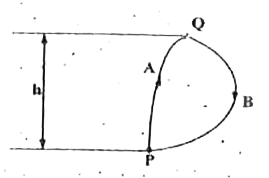
Here, displacement of the particle is PQ, gravity is acting vertically downward. The vertical component of PQ is h (say) upward. Hence
W(PAQ)=-mgh ...(1)
For the path QBP, component of the displacement along vertical is h ( downward)
In this case,
W(QBP)=mgh
∴ Total work done =WPAQ+WQBP=0
Topper's Solved these Questions
- BOOK - FIITJEECHAPTER - WORK, ENERGY AND POWER EXERCISE - SOLVED PROBLEMS (SUBJECTIVE )8videos
WORK, ENERGY AND POWER
- BOOK - FIITJEECHAPTER - WORK, ENERGY AND POWER EXERCISE - SOLVED PROBLEMS ( OBJECTIVE)18videos
WORK, ENERGY AND POWER
- BOOK - FIITJEECHAPTER - TEST PAPERSEXERCISE - PHYSICS747videos
TEST PAPERS
Similar Questions
An ideal gas is taken from point A to the point B, as shown in the P-V diagram, keeping the temperature constant. The work done in the process is
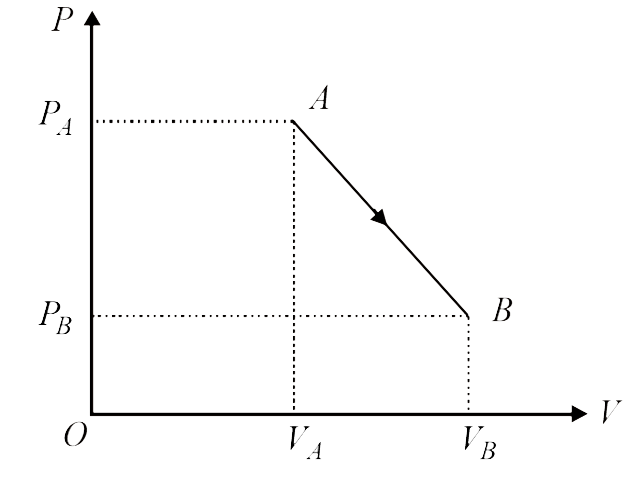 View Solution
View SolutionCalculate the work done.
(a) Along path AB (b) Along path BC
(c ) Along path CA
(d) For the whole cycle.
The indicator diagram, between P and V, is as shown.
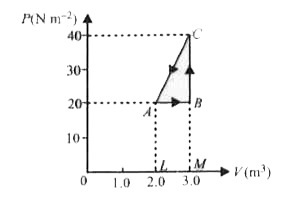 View Solution
View Solution
Knowledge Check
- Question 1 - Select One or More
An object is taken from a point P to another point Q in a gravitational field:
Aassuming the earth to be spherical, if both P and Q lie on the earth's surface, the work done is zeroBif P is on the earth's surface and Q above it, the work done is minimum when it is taken along the straight line PQCthe work done depends only on the position of P and Q and is independent of the path along which the particle is takenDthere is no work done if the object is taken from P to Q and then brought back to P along any path - Question 2 - Select One
An ideal gas is taken from point A to the point B, as shown in the P-V diagram, keeping the temperature constant. The work done in the process is :
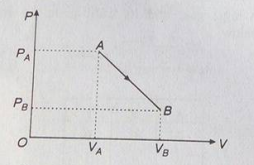 A(PA−PB)(VB−VA)B12(PB−PA)(VB+VA)C12(PB−PA)(VB−VA)D12(PA+PB)(VB−VA)
A(PA−PB)(VB−VA)B12(PB−PA)(VB+VA)C12(PB−PA)(VB−VA)D12(PA+PB)(VB−VA) - Question 3 - Select One
An ideal gas is taken from point A to the point B, as shown in the P-V diagram, keeping the temperature constant. The work done in the process is :
 A(PA−PB)(VB−VA)B12(PB−PA)(VB+VA)C12(PB−PA)(VB−VA)D12(PA+PB)(VB−VA)
A(PA−PB)(VB−VA)B12(PB−PA)(VB+VA)C12(PB−PA)(VB−VA)D12(PA+PB)(VB−VA)
In given figure, when a thermodynamic system is taken from state A to state B via path ACB,100 cal of heat given to the system and 60cal work is done by the gas. Along the path ADB, the work done by the gas is 20cal. Find the heat flowing into the system in this case?
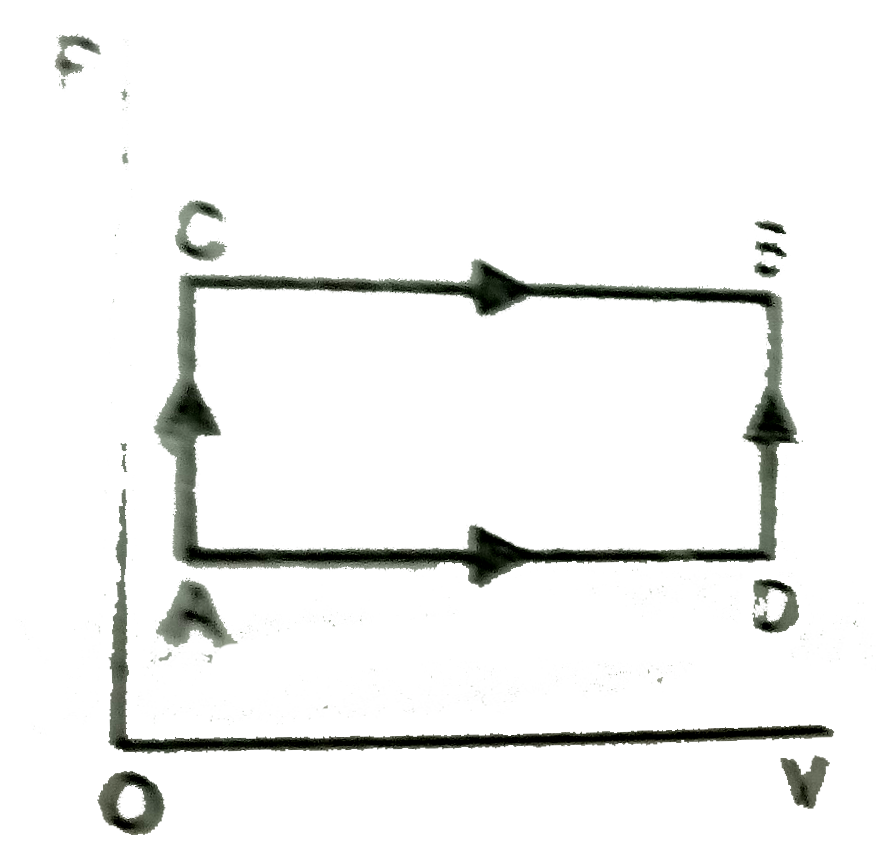 View Solution
View SolutionIn given figure, when a thermodynamic system is taken from state A to state B via path ACB, 100 cal of heat given to the system and 60 cal work is done by the gas. Along the path ADB, the work done by the gas is 20 cal. Find the heat following into the system in this case ?
View SolutionA particle is thrown vertically upwards from the surface of the earth. Let TP be the time taken by the particle to travel from a point P above the earth to its highest point and back to the point P. Similarly, let TQ be the time taken by the particle to travel from another point Q above the earth to its highest point and back to the same in terms of TP,TQ and H, is :-
View SolutionA point charge Q is moved along a ciruclar path around another fixed point charge. The work done is zero
View SolutionFrom a tower of height H, a particle is thrown vertically upwards with a speed u . The time taken by the particle , to hit the ground , is n times that taken by it to reach the highest point of its path. The relative between H,uandn is :
View Solution

